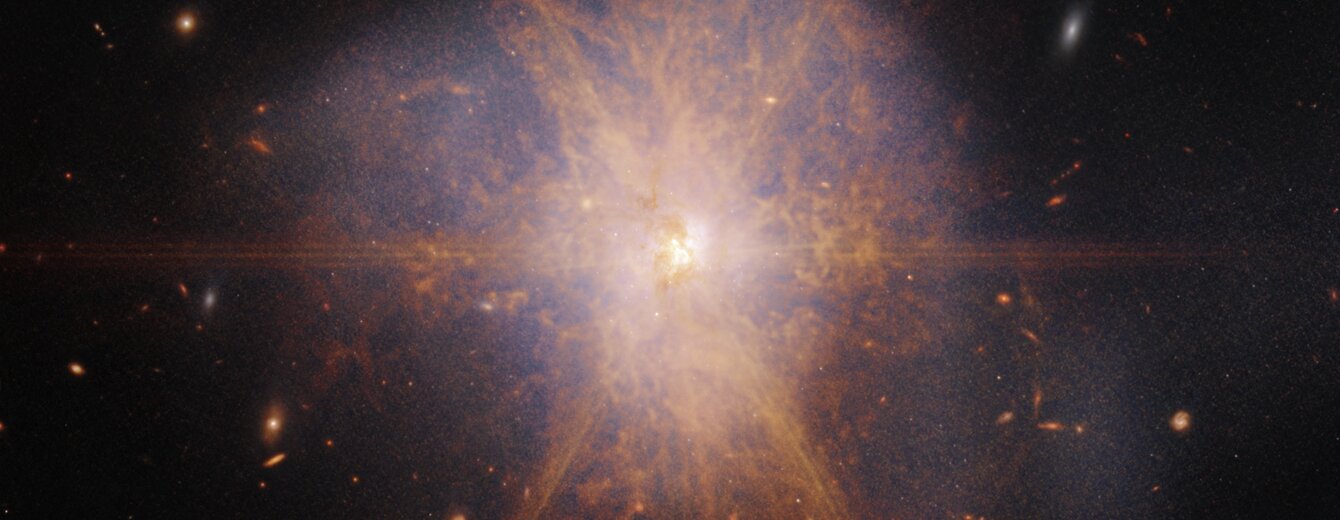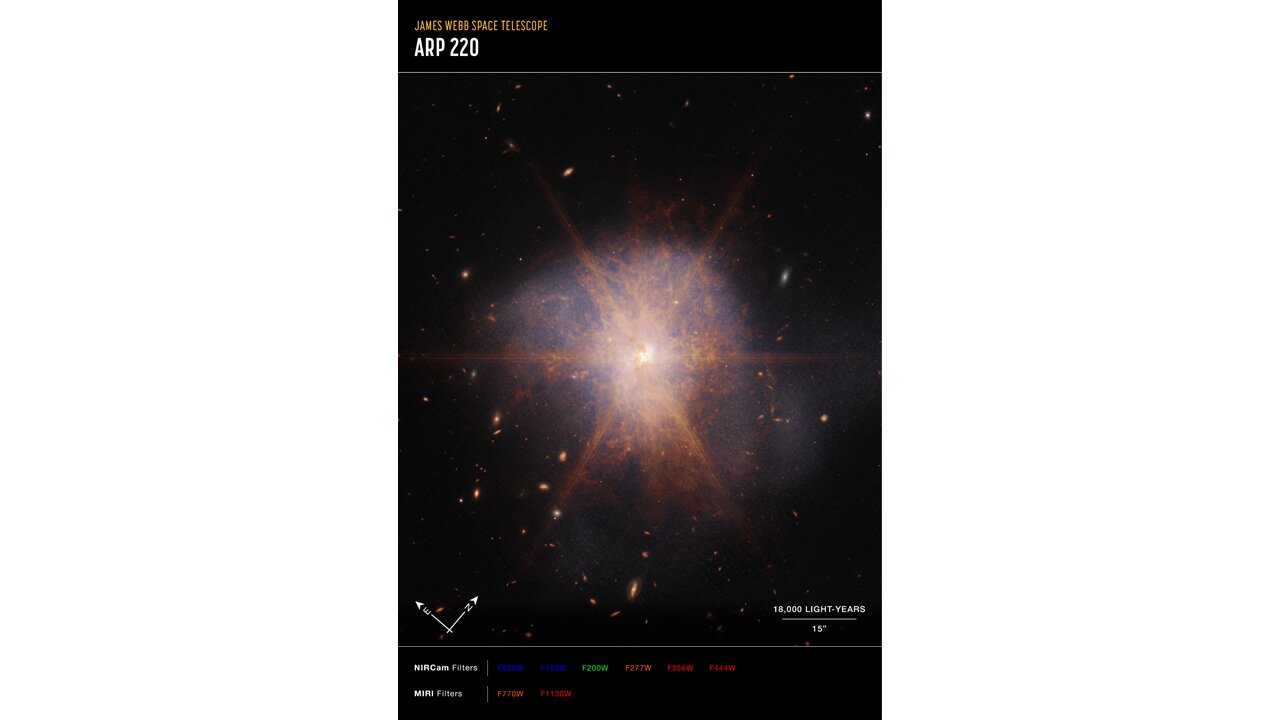 |
| Credit: IMAGE: NASA, ESA, CSA, STScI, Image processing: Alyssa Pagan (STScI) |
In a major breakthrough in space exploration, NASA's James Webb Space Telescope has captured the stunning image of the galactic merger Arp 220. The spectacular view of the galaxy was captured using Webb's Near-Infrared Camera (NIRCam) and Mid-Infrared Instrument (MIRI), showcasing the galaxy's unique features and stunning beauty.
What is Arp 220?
Arp 220 is a galactic merger of two spiral galaxies located 250 million light-years away in the constellation of Serpens. The collision of the two galaxies began about 700 million years ago, triggering an enormous burst of star formation. The resulting galaxy is an ultra-luminous infrared galaxy (ULIRG), with a luminosity of more than a trillion suns.
Why is Arp 220 significant?
Arp 220 is an important object for study as it provides astronomers with valuable insights into the formation and evolution of galaxies. It is the nearest ULIRG and the brightest of the three galactic mergers closest to Earth. The amount of gas in a tiny region of the galaxy is equal to all the gas in the entire Milky Way galaxy.
Webb's Spectacular View of Arp 220
NASA's James Webb Space Telescope captured the spectacular view of Arp 220 using its Near-Infrared Camera (NIRCam) and Mid-Infrared Instrument (MIRI). The galaxy appears to be shining like a brilliant beacon amidst a sea of galaxies. The stunning image showcases the galaxy's unique features and stunning beauty.
The image reveals about 200 huge star clusters packed in a dusty region about 5,000 light-years across, representing about 5 percent of the Milky Way's diameter. The parent galaxies' cores are 1,200 light-years apart and have rotating, star-forming rings blasting out dazzling infrared light, which creates the diffraction spikes that dominate the image.
Webb's image also shows faint tidal tails, or material drawn off the galaxies by gravity, represented in blue. These are evidence of the galactic dance that is occurring. Organic material appears in streams and filaments across Arp 220, represented in reddish-orange.
Implications of Webb's Observation
Webb's observation of Arp 220 provides valuable insights into the formation and evolution of galaxies. The galaxy's unique features and stunning beauty showcase the complexity and diversity of the universe. The observation will also help astronomers understand the mechanisms that trigger star formation in galaxies and the role of galaxy mergers in the evolution of the universe.




0 Comments